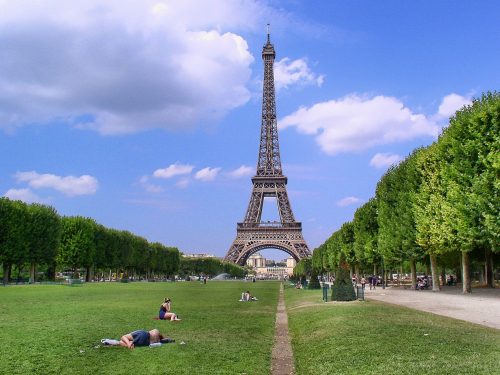 Best Time To Visit Paris: Planning Your Ideal Trip
Best Time To Visit Paris: Planning Your Ideal Trip
When it comes to planning the perfect trip to Paris, timing is everything. The good news is that there isn’t a bad time…
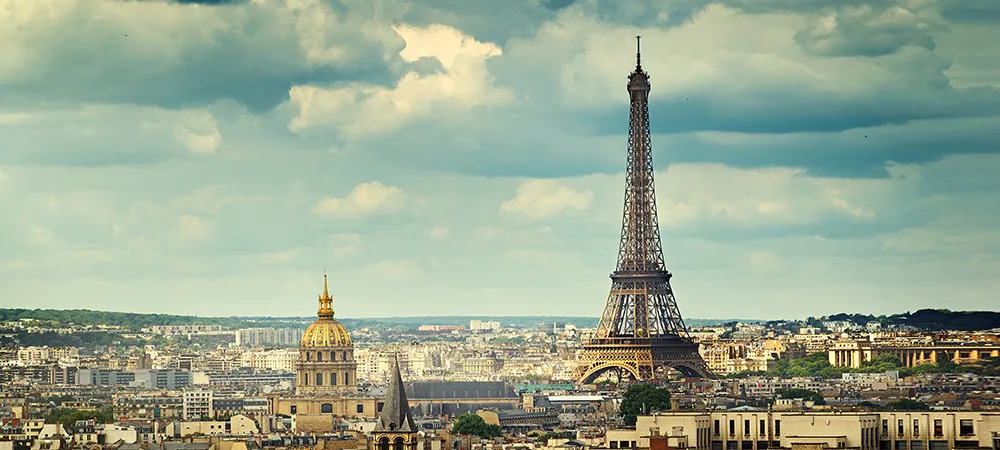
Paris always feels like a dream, even when you finally arrive. It’s this dream-come-true quality that compels Fred Astaire and Audrey Hepburn to sing, “Bonjour, Paris!” as they travel from iconic Paris landmark to iconic Paris landmark in Stanley Donen’s 1957 musical “Funny Face.” It’s why most of us have fantasies about Paris, even if they’re stuck in the past like the protagonist (played by Owen Wilson) in Woody Allen’s “Midnight in Paris.”
What is it about Paris that makes the City of Light the city of our travel dreams? There’s a timelessness to Paris that lives in its naturally cinematic streets, buildings, and monuments. When you walk around the city — and we do recommend walking — you’ll imagine you’re living inside the fantasy of every movie about Paris you’ve ever seen.
It’s the Paris landmarks and attractions that make the fantasy real. From the French Gothic architecture of Notre-Dame to the wide avenues and public squares designed in the Haussmann style of the 19th century, the city is a timeline of Parisian sites from medieval to modern-day.
To plan your dream itinerary, we’ve put together a list of 12 beloved Paris landmarks to visit and the best things to do while you’re at each of them. Consider this a guide to your Parisian fantasy.
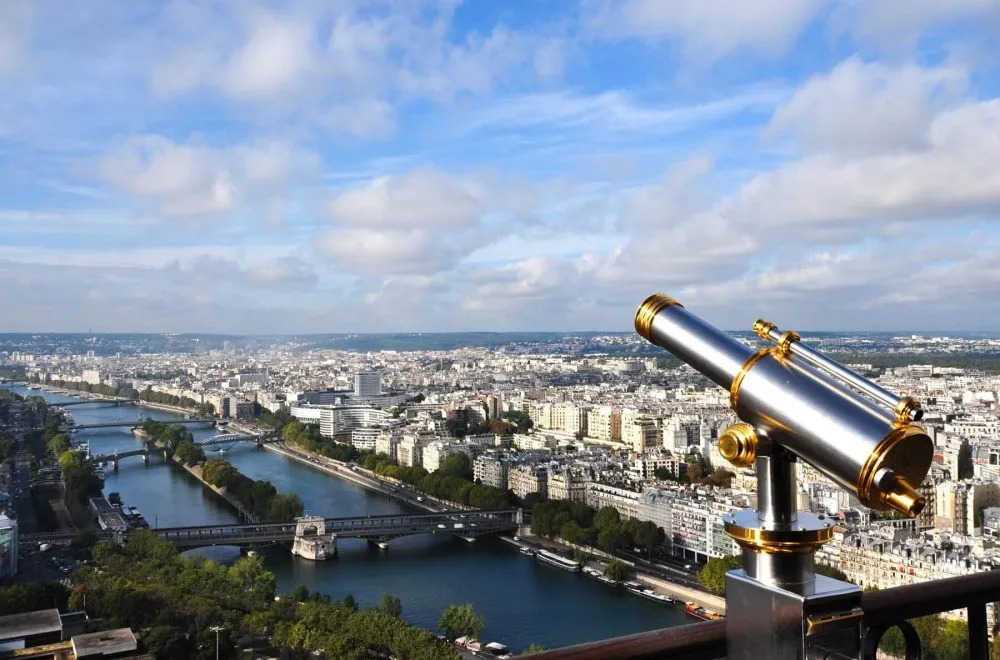
No matter how many times you visit Paris, you should never leave without walking along the Seine River with your hands in your pockets and a baguette under one arm, getting the best Parisian sights from the Eiffel Tower or Arc de Triomphe, and wandering around a busy marketplace or the beautiful Luxembourg Gardens.
And you can see the best Parisian landmarks with our Paris tours for a more in-depth experience, as you’ll learn their history and insider tips from a local guide. You’ll get skip-the-line access to the Paris Catacombs and Louvre galleries, walk through the Père Lachaise Cemetery, hear first-hand accounts of the 2019 fire at Notre-Dame, and more.
Here’s your Paris landmarks list to make the most of your trip.

The light side of Paris is beautiful, but have you ever thought about exploring its dark side? More than 60 feet under the city’s streets, you’ll find 200 miles of tunnels known as the Paris Catacombs. Actually, the 200-mile labyrinth is all that’s open to the public, but the catacombs are thought to cover nearly 2,000 acres — a true land of the dead.
How did the catacombs come about? Before the French Revolution, these underground quarries were starting to be used as burial grounds to limit the spread of disease from overcrowded cemeteries. Guillotine victims from the bloodbath were immediately buried there, including the famous leader Robespierre who was beheaded in 1794.
This Paris landmark opened to the public back in 1809 (by appointment), and it’s since become the must-see attraction on everyone’s itinerary. Lines for tickets can get long, so we recommend booking our Paris Catacombs tour. Not only will you skip the long line, but you’ll also get special access to parts closed off to the general public.
Tips for visiting the Paris Catacombs:
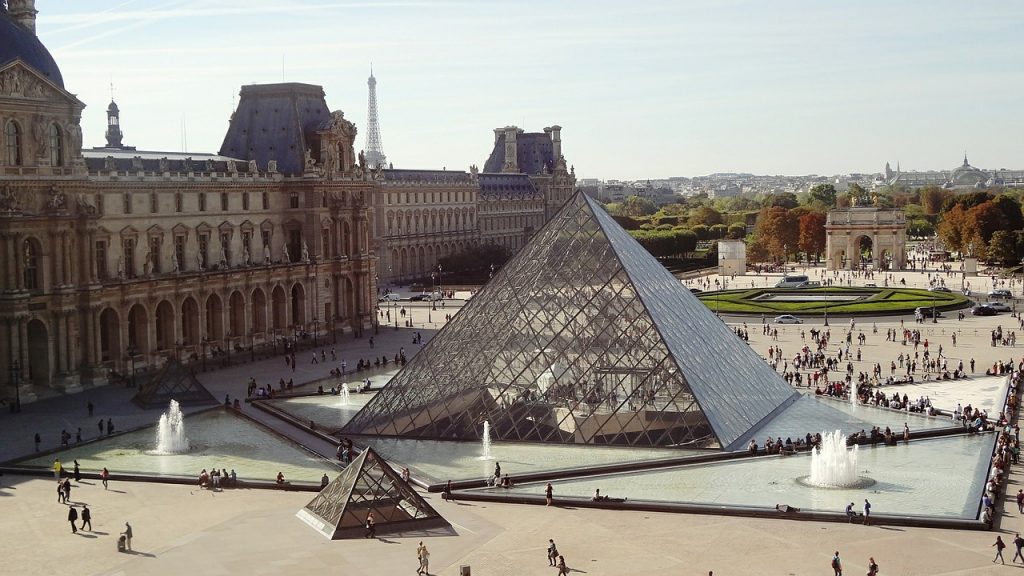
The Louvre Museum in Paris holds the title for the largest art museum in the world with four floors of paintings and sculptures that span from the 7 B.C. to the 19th century. With so much to see and do, you’re in for a day of culture while also getting your steps in.
The building that houses the museum’s extensive collection dates back to the 12th century when it was a fortress under King Philip II. It eventually became a royal residence and was updated over time until it was converted into a museum during the French Revolution.
It’s pretty wild to think that the Louvre opened its doors for the first time amidst the bloodshed and beheadings of the revolution! But Enlightenment age intellectuals demanded that the royal collections be made available to the public, which led to the first opening of the Louvre on Aug. 10, 1793.
Surprising fact: The museum has always been called the Louvre except for one brief moment in the 19th century when the museum director Vivant Denon decided to rename it the Napoleon Museum. Napoleon’s conquests are responsible for expanding the museum, though much of the works he stole were returned after the Vienna Treaty of 1815.
Apart from its ornate architecture and four levels of art galleries, the Louvre is probably most famous for the 70-foot pyramid that stands outside. The pyramid has an interesting history, as it was designed by the Chinese-American architect Ieoh Ming Pei who won a commission to renovate the museum in 1989. The design wasn’t popular at first, but neither was another iconic Paris landmark.
From the “Mona Lisa” to the “Venus de Milo” to “The Wedding at Cana,” you’ll never see all the masterpieces in the Louvre’s collection in a single visit. But our guided Louvre tour can help you navigate the museum and ensure you see what matters. Plus, you’ll have reserved tickets to get you in faster.
Tips for visiting the Louvre:
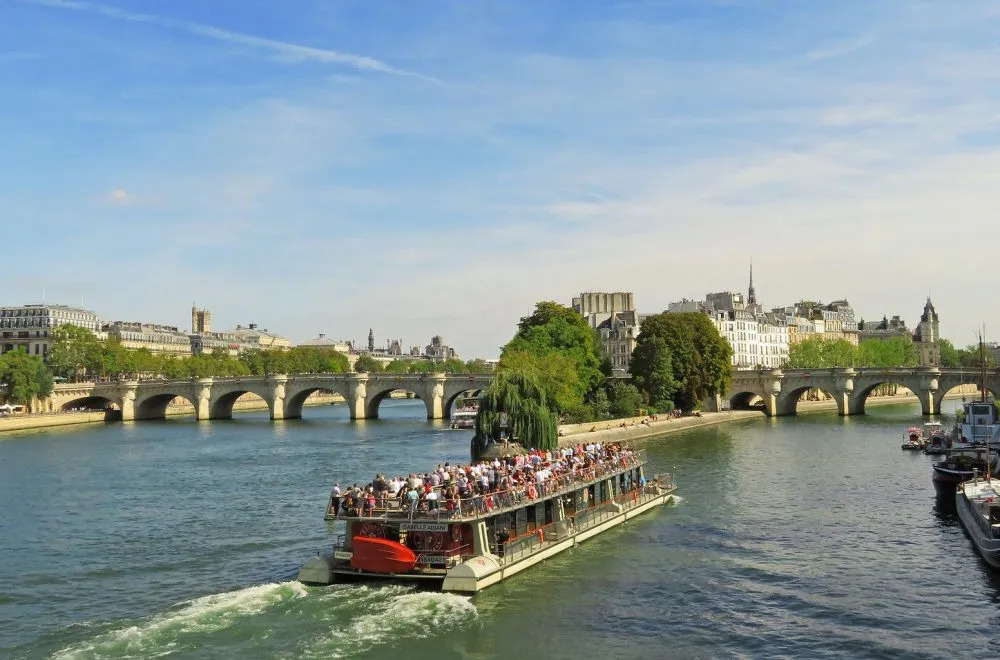
The Seine River and its 37 bridges and footpaths are the most romantic and dreamlike part of Paris. Connecting the city’s Right and Left Banks, the bridges that cross the river have long been necessary for trade, commerce, and reducing traffic congestion.
The first bridges were built by the Parisii tribe, who settled in Ile de la Cité in 52 B.C. One of these bridges, Petit Pont, would be the oldest bridge — today, it’s the smallest and called Petit-Pont-Cardinal Lustiger — in Paris if it wasn’t reconstructed in 1850 due to damage from years of invasions. And so the Pont Neuf, completed in 1607, is the oldest bridge in Paris, and one of the most iconic.
Here are the Seine bridges you must see (and walk across) while you’re in Paris:
To understand the role the Seine and its bridges have had in shaping Paris’ identity, our Seine River tour will guide you through their history and explain what makes them unique.
Tips for what to do on the Seine River:

In 1831, Victor Hugo finished writing “The Hunchback of Notre Dame,” which he hoped would make more people appreciate Gothic landmarks that were being vandalized or neglected at the time.
Given how much the tragic fire of 2019 upset the world, it’s hard to believe that Notre-Dame was heavily neglected and vandalized in the 19th century because the architecture was considered old-fashioned. At the end of the novel, Hugo even predicts that this religious and artistic site will disappear.
But the success of “The Hunchback of Notre Dame” saved it, and it’s been a popular Paris attraction for years. Notre-Dame de Paris, which translates to “Our Lady of Paris,” is now considered a Gothic masterpiece with its stained-glass windows, towering steeple, and (lovable?) gargoyles.
Now that the cathedral has been restored, you can visit and learn all about it on our Notre-Dame Cathedral Guided Tour. In addition to the church’s fascinating history, you’ll hear how it was reborn after the 2019 fire and discover the beautiful art and architecture — like the rose windows! — that make it so unique.
Tips for visiting Notre-Dame:
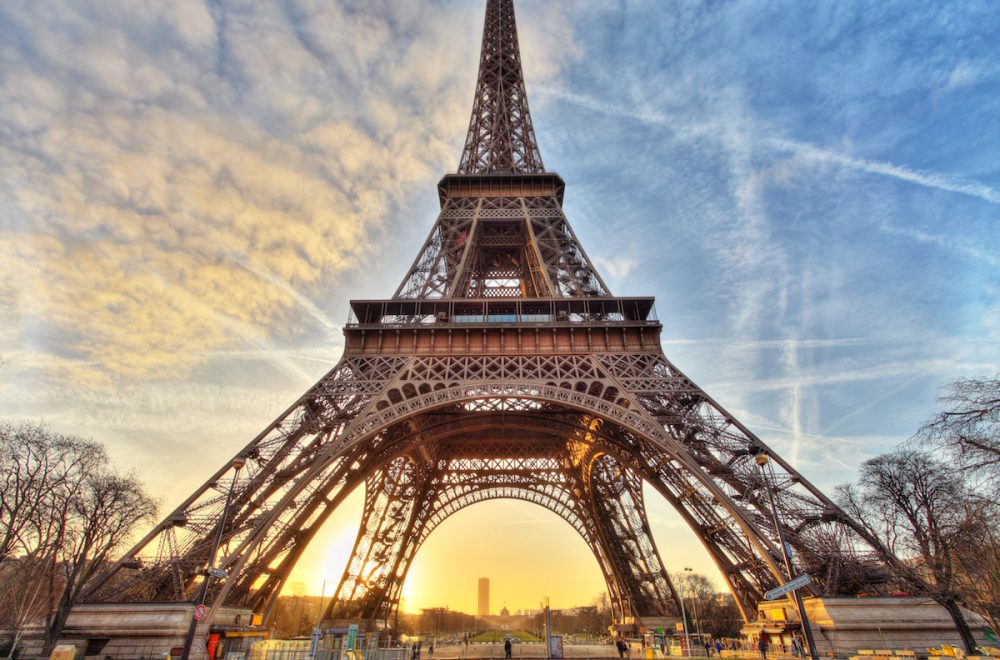
If you don’t visit the Eiffel Tower, can you really say you’ve been to Paris? Of course, you have, but why would you pass up the chance to look out at the City of Light from inside the Iron Lady? Climbing the Eiffel Tower is actually how its creator, Gustave Eiffel, thought it should be seen. Critics of the tower also preferred to be inside it — French writer Guy de Maupassant reportedly dined inside one of its restaurants so that he wouldn’t have to look at it.
That’s why our Eiffel Tower tour is unique (though there’s no shame in taking the elevator). The focus is on what you’ll see as you climb each floor, like the view beneath your feet of the transparent floor on the first level, the more zoomed-out view at 370 feet on the second level, and the bird’s-eye-view of everything from the Arc de Triomphe to the Sacré-Cœur Basilica in Montmartre.
While inside the tower, consider taking a break on the second floor to eat at Le Jules Verne restaurant for lunch or an intimate dinner. The Michelin Star restaurant offers cuisine at prices associated with a fancy meal, but the views make it worth it. There are more budget-friendly dining options in the Eiffel Tower, or you could eat at a nearby restaurant like Frame Brasserie in the 15th Arrondissement.
And whatever Guy de Maupassant’s views on looking at the Iron Lady were, we think she makes a lovely sight from the beautiful Eiffel Tower Gardens. Visit in spring when the daffodils, irises, and cherry blossoms are in bloom, and you’ll have a view of the Eiffel Tower that you thought you’d only see in the galleries of an art museum.
Tips for visiting the Eiffel Tower:
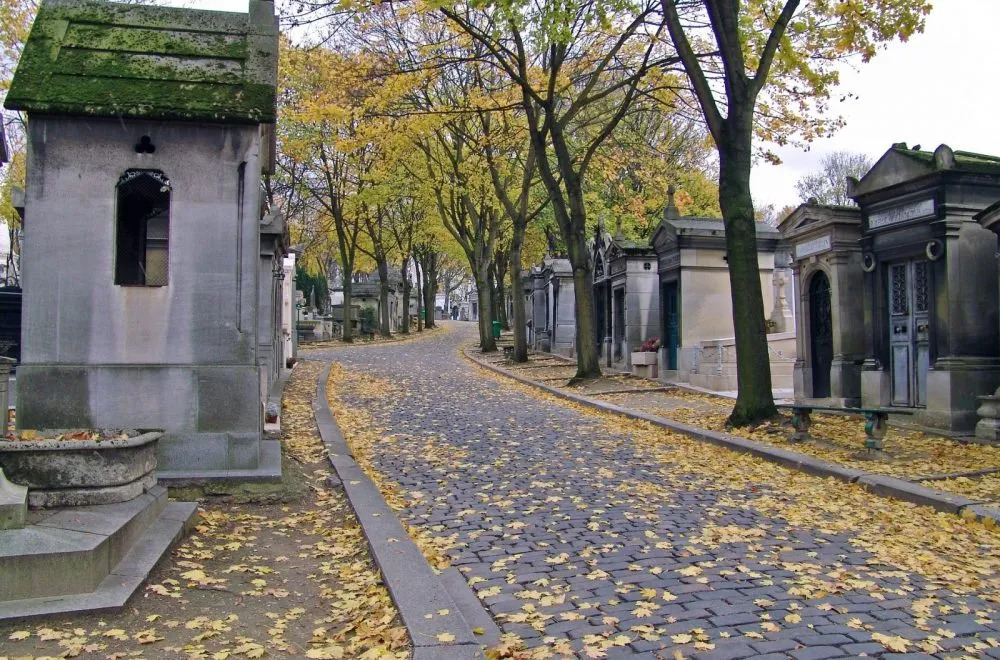
You might not have had the Père Lachaise Cemetery on your list of Paris landmarks to visit, but that’s a mistake. Père Lachaise is a beautiful cemetery that also happens to be the final resting place of famous figures like Jim Morrison, Oscar Wilde, and Edith Piaf.
Located in the 20th Arrondissement, the cemetery is one of the four main burial grounds commissioned by the city of Paris during the peak of Haussmann’s renovation. While Père Lachaise might seem like a peaceful place to be laid to rest, it’s actually simmering with scandals and love affairs just below the surface, as you’ll hear on our Paris cemetery tour.
Do the lavish headstones and sepulchers make you want to plan your burial there? Unfortunately, there’s a waitlist and the rules are strict for who gets a spot.
Tips for visiting Père Lachaise Cemetery:
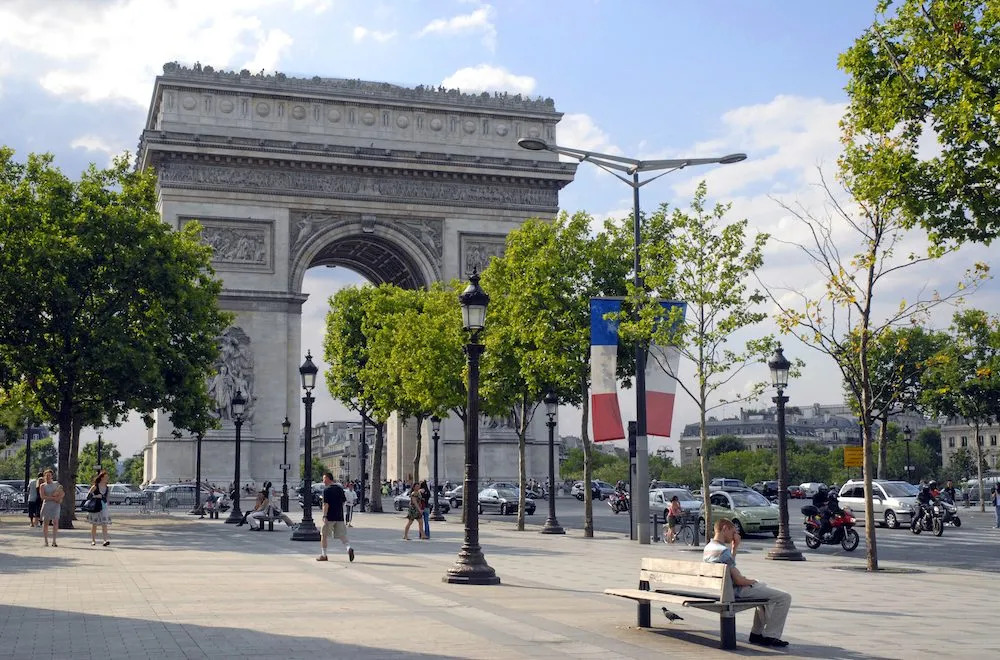
Famous for shopping, majestic monuments, and the many festivals held here, the Champs-Élysées is the world’s most beautiful and exciting avenue. It runs from the Place de la Concorde to the Arc de Triomphe and is visited by hundreds of thousands of people every day.
While most people know it today for being lined with luxury shops, it was named for the Elysian Fields or “heaven” in Greek mythology. It is a sort of heaven for anyone who wants to buy products from renowned French brands or high-end American ones like Tiffany & Co. Theater and art lovers will also love this wide boulevard for its many cinemas, theaters, and art galleries.
Surprising fact: Twice a year, in May and August, the sun sets in the middle of the Arc de Triomphe, which is an incredible site you can watch from the Champs-Élysées.
Each year on July 14, the Champs-Élysées is the site of a huge Bastille Day celebration, when the avenue is decked out in France’s national colors and military troops march in a parade.
Tips for visiting the Champs-Élysées:
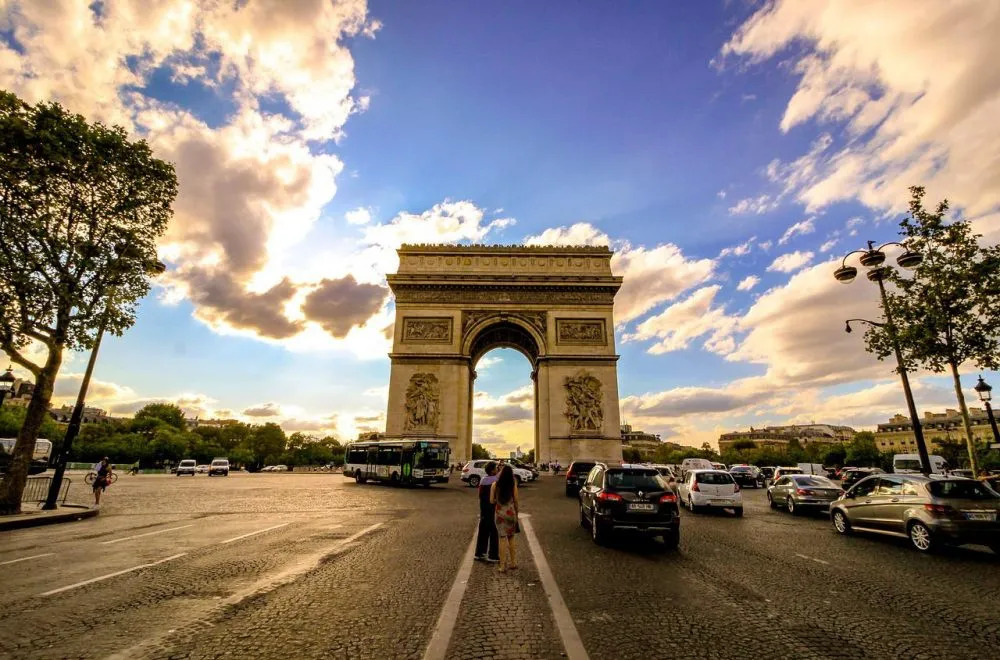
Paris monuments are unlike any other in the world, and the Arc de Triomphe is one of the most celebrated. This marvel of Neoclassical architecture, located at one end of the Champs-Élysées, stands 164 feet high and 148 feet wide — you can’t miss it! Nor would you want to.
The arch dates back to 1805 when Napoleon’s forces were victorious over Russian and Austrian troops at the battle of Austerlitz, and he ordered the monument’s construction to celebrate the win. The project might have broken ground a year later on the emperor’s birthday, but it took 30 years to complete and didn’t officially open until 1836, during King Louis-Phillipe’s reign.
In the past, the Arc de Triomphe has been used for soldiers to march past in a sort of victory lap, but today it’s considered to be a symbol of peace. Every year, a ceremony at the Tomb of the Unknown Soldier, buried below the arch, marks the anniversary of the armistice signed at the end of World War I on Nov. 11, 1918. If you’re near the Arc de Triomphe at 6:30 PM, you’ll get to see the rekindling of the Eternal Flame that has taken place every evening since 1923.
Tips for visiting the Arc de Triomphe:
Take a guided tour to experience the Arc de Triomphe as the jewel of the Champs-Élysées.
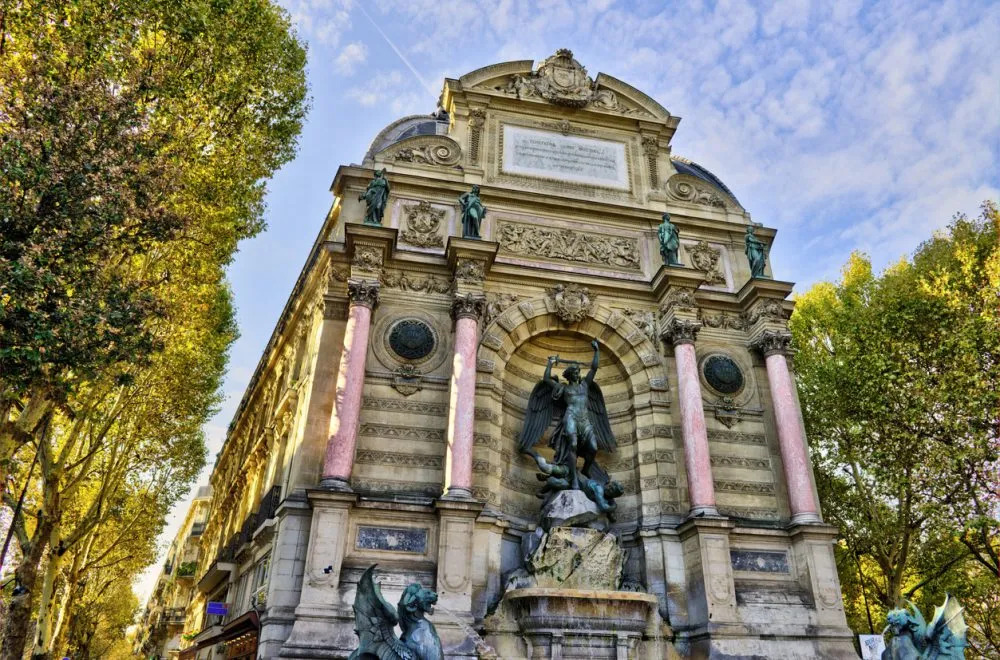
One of the highlights of our Latin Quarter Walking Tour is marveling at the ornate details of the tallest fountain in Paris: the Saint Michel Fountain, depicting the archangel Michael defeating the devil in its central niche. Designed by the architect Gabriel Davioud during Haussmann’s reconstruction, the fountain is now a popular meeting place and happens to be the starting point of our tour.
Many visitors skip the Saint Michel Fountain even though it’s listed in guidebooks, but we don’t think you should. It’s not a bad idea to contemplate good triumphing over evil — even on vacation — and that’s what this monumental fountain is meant to symbolize.
The fountain is open 24/7 and free to visit. Once you’ve finished looking at all the sculptures and other details, you can head to one of the nearby cafes for a bite to eat or stop in one of the surrounding bookshops — we recommend Shakespeare & Company.
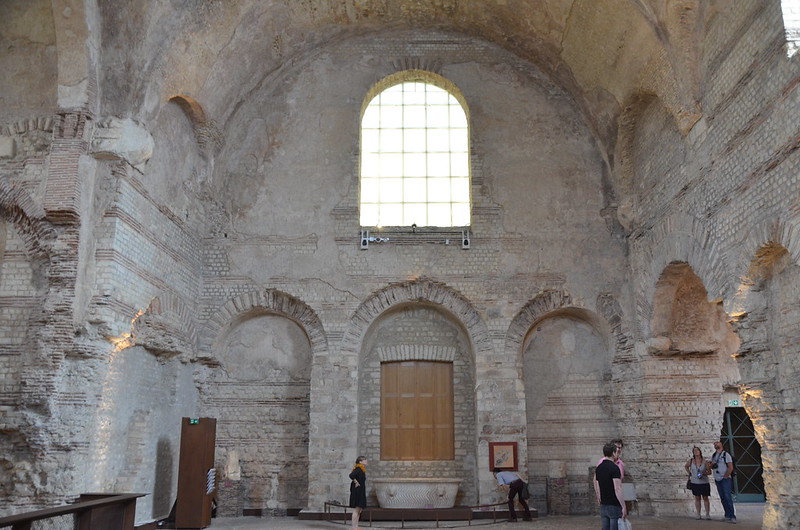
The Cluny Museum (officially known as Musée de Cluny or Musée National du Moyen Âge) is known for its extensive collection of medieval art. More unique than the works of art from the Middle Ages is the building that houses it, which combines the 15th-century Hôtel de Cluny with the ruins of Gallo-Roman thermal baths.
The Hôtel de Cluny is a magnificent medieval mansion that gets its name from the abbots of Cluny, who made it their private residence starting in the 13th century. During the French Revolution, the property was confiscated by the state and served many purposes until a collector named Alexandre Du Sommerard made it his residence in 1833. After he died, the mansion reopened as a museum in 1843, displaying his large collection of medieval and Renaissance art.
If you only have time to see one thing at the Cluny Museum, it should be “The Lady and the Unicorn” tapestries. This series of six tapestries is considered the best surviving artifact from the Middle Ages and is commonly interpreted to be depicting the five senses. Each tapestry also contains an image of a noblewoman with a unicorn on her left and a lion on her right.
Tips for visiting the Cluny Museum:
There’s a museum map you can download on the website, and you might even qualify for free admission.
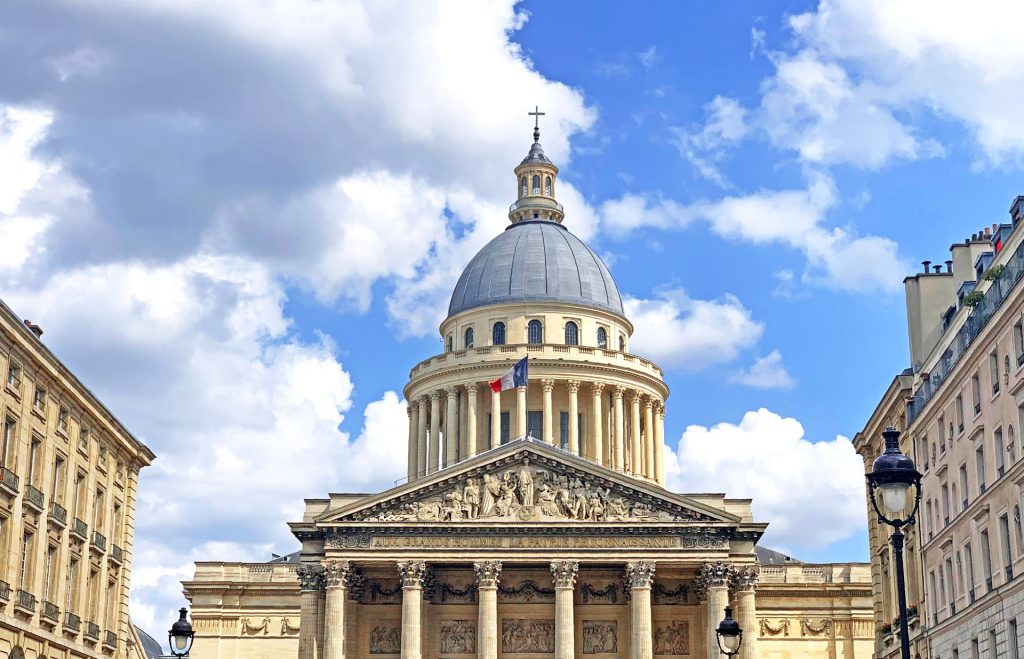
Paris has a Panthéon? It sure does. Even though it’s close to the Cluny Museum and Luxembourg Gardens, it tends to fly under the radar when it comes to Paris attractions. All the more reason to add it to our list of landmarks you should see!
The Italian version of the Panthéon is arguably the more famous of the two, but they both have similarities. Both were built for religious purposes, and they look about the same from the outside, too. Modeled on the original one in Rome, the Paris Panthéon also features columns, a dome, and a triangular pediment.
Construction of the Panthéon started under King Louis XV but took over three decades to finish, as the project kept running out of money. It was finally completed before the start of the French Revolution and was repurposed as a temple for liberty and the great French scientists, philosophers, and others who upheld its cause.
It became a mausoleum for the crème de la crème of French citizens, including Victor Hugo, Marie Curie, Simone Weil, Voltaire, and Louis Braille.
Tips for visiting the Panthéon:
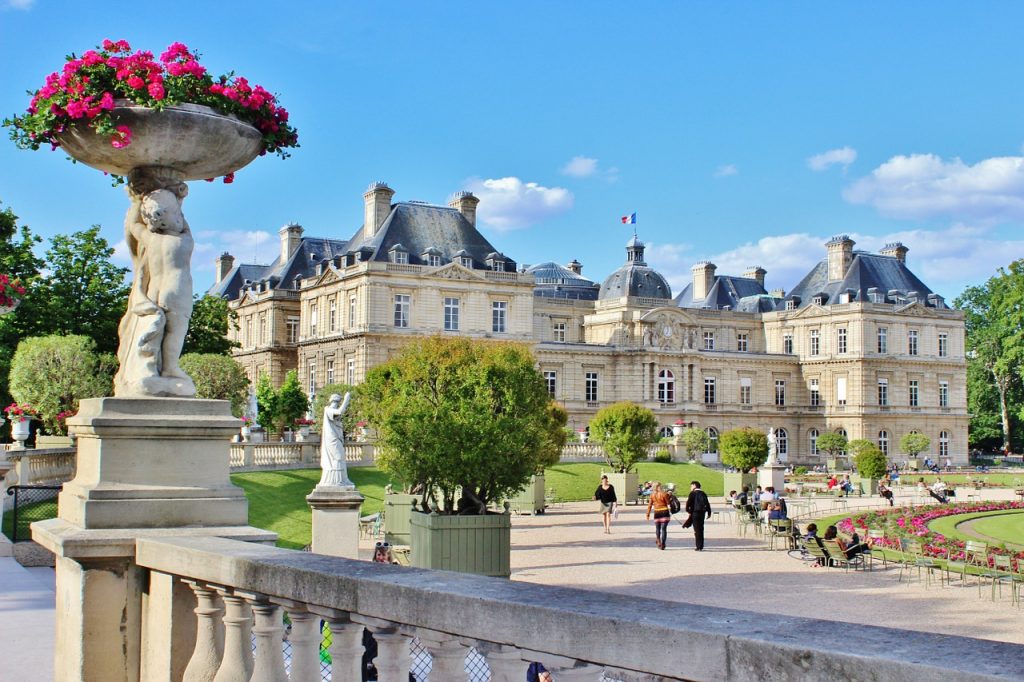
Located in the 6th Arrondissement, the Luxembourg Gardens might best be described as paradise in Paris. They were inspired by the Boboli Gardens in Florence, which draw millions of visitors a year — no one does gardens better than Renaissance Italians. The French queen who ordered their creation, Marie de Medici, grew up in Florence and knew that there was no better place to draw inspiration for her Parisian garden.
Walk around this beautiful public park and you’ll see that classical statues from Roman and Greek mythology are everywhere. Look closely among the statues of nymphs, cherubs, and satyrs, and you’ll likely spot a marble statue of the French novelist George Sand and, more familiar to anyone who has visited Liberty Island in New York, a smaller version of the Statue of Liberty.
The Luxembourg Gardens have more than looks going for it. They’re genuinely a fun and whimsical place to spend an afternoon. Locals come for the chess tables, tennis, basketball, pony rides, carousel, pétanque courts, and occasional concerts. If you’re traveling with kids, you can rent toy boats to sail across the pond in front of the palace, or take them to a show at the Théâtre des Marionnettes.
Looking for more gardens? Explore the Tuileries Garden before visiting the Louvre Museum.
Whatever you do, don’t leave the Luxembourg Gardens without stopping at the Medici Fountain or Luxembourg Palace. These stunning attractions are the perfect photo ops to make everyone envy your dream trip to Paris.
Tips for visiting the Luxembourg Gardens:
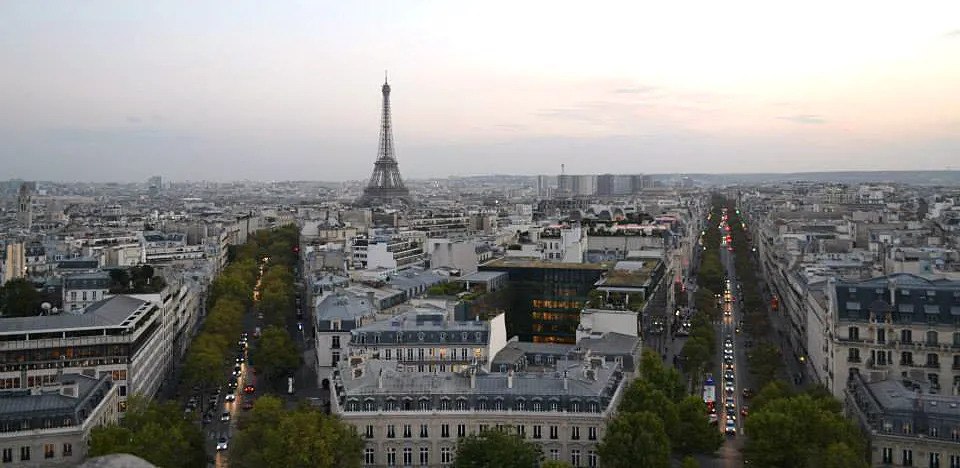
The key to planning a dream trip to Paris is having a plan for how you’ll fit in all the attractions you want to see. Now that you’ve got a list of the best Paris monuments, museums, and parks, use these tips to make the most of your trip.
1. Research and book ahead
Take time to research the landmarks you want to visit. Opening times may vary by season, especially if you’re visiting during a bank holiday or in the off-season. You might also want to book tickets online if you can, since it’s often cheaper than buying them on site. This might also save you the disappointment of getting to an attraction and finding that tickets for the day are sold out.
2. Time your visit to avoid long lines
During the peak tourist season in the spring or summer, lines for popular landmarks like the Eiffel Tower and Louvre Museum can get pretty long. Instead of getting up early to try to beat the crowds, do some of your sightseeing at night when everyone is heading to dinner. Making dinner reservations, buying tickets online, and booking skip-the-line tours are also great ways to get around the crowds.
3. Get insider knowledge from a guided tour
If it’s your first trip to Paris, taking guided tours of Paris is a great way to get to know the city. Your guide will not only show you the highlights but also give you tips on the best way to get around, how to avoid tourist traps, where to get the best croissants, and more. And if your time is limited, you need someone who can help you make the most of it.
4. Know how to get around the city
Paris has plenty of transportation options, but be sure to check an app like Google Maps or Citymapper to see how much time getting from point A to point B will actually take. Walking is the best way to see the city, but the Metro is what many locals rely on. It has 14 lines that run from 5:30 a.m. until 1 a.m., and it even connects with the Paris RER trains that take you to the airport, Disneyland, and Versailles. Planning your sightseeing around attractions that are close to each other is another way to save travel time.
5. Immerse yourself in the experience
No matter which Paris landmark you’re visiting, find a way to experience it in a new way. This could mean engaging with an interactive exhibit at a museum, asking a local for directions, or getting a panoramic view of the city from high up. It can also mean putting down the camera or phone and just being there.
All that’s left to do is make your Paris dreams come true with unforgettable experiences that immerse you in the sights, sounds, and smells of the beautiful French capital.
There’s no reason to plan every part of your trip alone. With our Paris tours, you’ll have local guides showing you the best ways to experience the city’s iconic landmarks and attractions. And be sure to keep this guide handy while you’re planning your Parisian adventure.
À bientôt (see you soon)!
 Best Time To Visit Paris: Planning Your Ideal Trip
Best Time To Visit Paris: Planning Your Ideal Trip
When it comes to planning the perfect trip to Paris, timing is everything. The good news is that there isn’t a bad time…
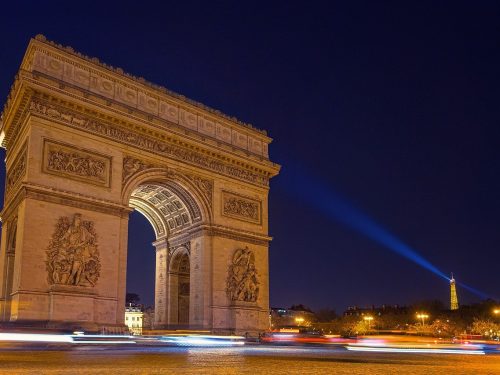 Everything To Know About the Arc de Triomphe Before You Go
Everything To Know About the Arc de Triomphe Before You Go
Paris is not only a city of lights, but of breathtaking monuments. It’s no surprise the most celebrated monument in the city is…
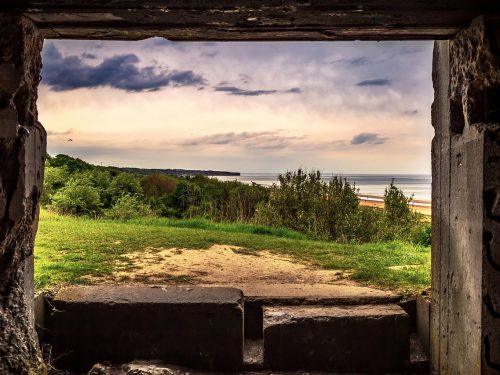 How To Visit the D-Day Beaches in Normandy From Paris
How To Visit the D-Day Beaches in Normandy From Paris
A visit to the D-Day beaches in Normandy is an experience everyone should have at least once in their lives. These beaches hold…